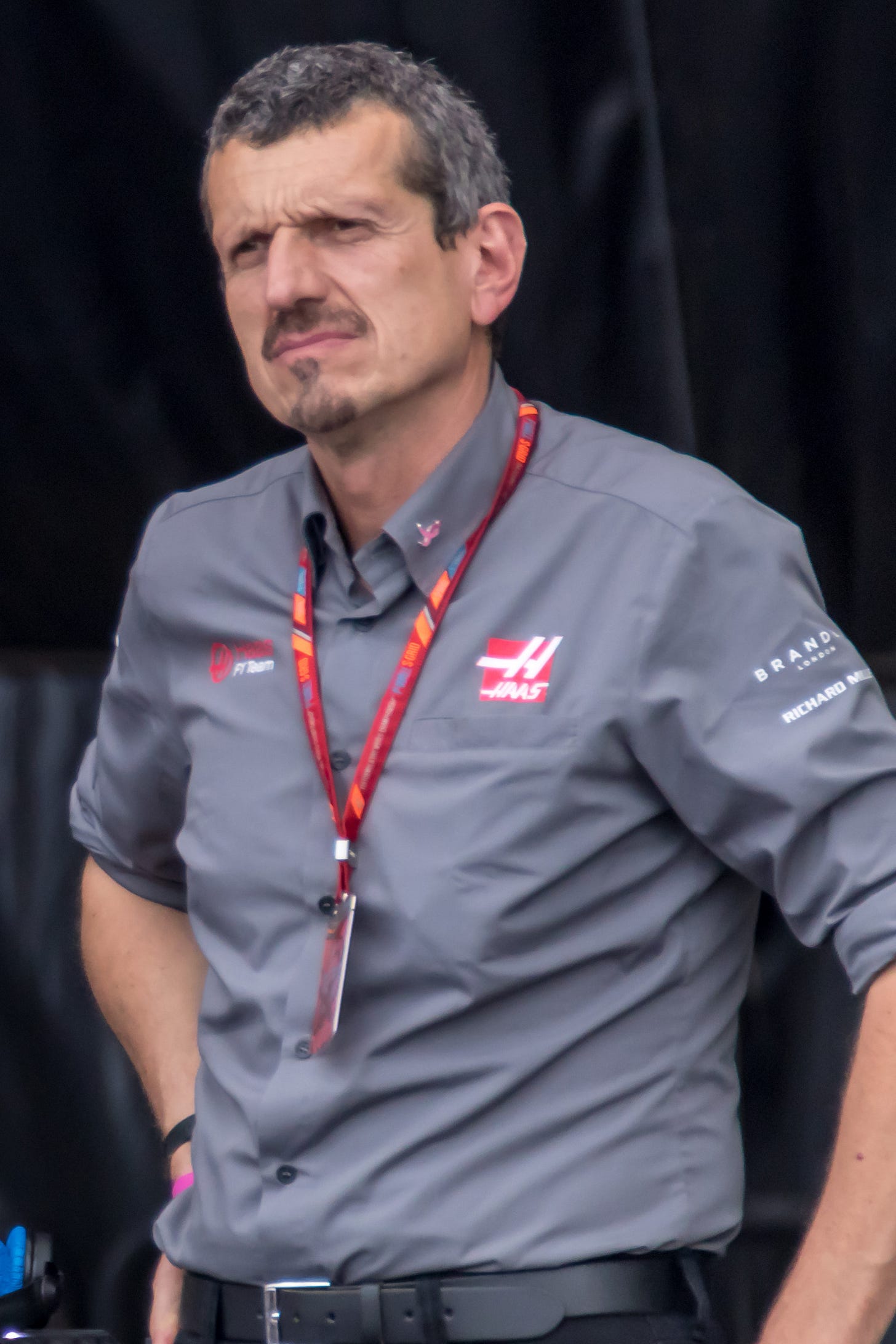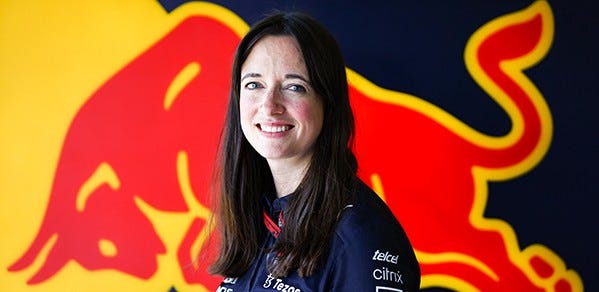In July 2022, I attended Friday practice at Silverstone for the British Grand Prix. When the track action had finished, and the sun was sinking lower in the sky, we were driving along the service road that takes you from the inside of the circuit out to the main exits. As we were slowly trundling along, a group of young girls, probably in their late teens, suddenly started running alongside the car in front of us, which was a small and relatively understated sports car. It was clear they had recognised the driver and were shouting to ask if they could get a photo with him. The driver duly obliged, stopping the car and posing for a picture through his open window, much to the girls’ delight. At the next roundabout, out of curiosity, I looked to see if I could identify the driver, and it became clear that it was then-Alpine driver Esteban Ocon.
On the journey home, I thought back to this encounter and reflected on just how it epitomised the change in demographics that Formula 1 was seeing in its fans. The fact that these girls were at Silverstone for Friday practice, not the race, and recognised Esteban Ocon, who, with all due respect, is not Lewis Hamilton or Lando Norris, prompted them to rush over for a photo with such excitement that it was remarkable. Could I have imagined this happening even five years ago? I’m not sure I could.
The Entry Points
Since then, the increase in F1’s female fandom has been dramatic and is, without doubt, the core growth area for the sport. Women and girls now comprise 41% of the total fan base, with the 16-24 age demographic being the fastest-growing sector. So, how has the sport attracted this new generation of female fans, and what is it about F1 that appeals? Speaking to Nadia and Liv, two fans who have been drawn to the sport in recent years, it is clear that numerous factors are at play.
“Like a lot of people, men and women alike, I got into the sport through watching Drive to Survive”, explains Nadia. “I’ve never had a keen interest in any sport, but the way the show explained exactly what goes on both on and off track and showed the personalities meant there was a story there, and it piqued my interest.”
For Liv, it was a broadly similar experience, “There obviously are girls out there that love cars, but I wouldn’t say I’m one of them. I didn’t grow up watching it because my Dad doesn’t watch it and neither does my Mum. I got into it the season before the show [Drive To Survive] and then I definitely think the series drew me in further. Seeing behind the scenes, rather than just the cars, seeing the characters of the drivers, that locked me in.”

It quickly became apparent that Drive to Survive was doing a stellar job in bringing newer fans to the sport, and so for F1, the challenge soon became what to do next. Specifically, how to get these new fans to watch races. After all, viewership is the key to the commercial success of F1. Broadcast deals and sponsorship are two of its primary sources of revenue, and without fans tuning in to watch the races live, both suffer.
For Nadia, the transition was fairly seamless. “I started watching YouTube videos and reading about F1 so I could understand the rules and regulations and better understand things like tyre strategy. I love all the technical stuff. As soon as I was up to date on Drive to Survive, I immediately started watching races live, and that gave me so much more to dive into. I almost exclusively listen to F1 podcasts these days and try to watch every moment of coverage, including the practice sessions and post-race analysis. I actually don’t think I’m up to date on the latest season of Drive to Survive - once I started watching the live-action, that was much more interesting.”
“There’s not really a part of it that I’m not interested in”, Nadia continues. “It’s a huge scale from the technical regulations to fashion, to the social media - the memes are comedy gold.”
Girls’ Trip To The Grandstand
The huge increase in female fandom has begun to translate into more diverse grandstands at the races themselves. It was estimated that in 2019, only 20% of race attendees were female, a number that has since grown to over 33%. Helping to fuel this increase are organisations set up specifically to arrange trips for women to attend F1 races, ensuring they can not only experience the sport firsthand but also in an environment in which they feel safe and comfortable.

One such organisation is Girls Across The Grid - a community uniting female motorsport fans worldwide. Launched in 2022, they initially hosted live race watch-alongs in bars and have since expanded into a network of over 19,000 women worldwide, featuring regular events and meet-ups at races throughout the F1 season. For last year’s British GP, they worked directly with Silverstone to create their own female-only campsite, with hundreds of members joining for the weekend.
Another is Off To The Races, who organise all-inclusive luxury weekend packages for female F1 fans. The racing takes centre stage but is supplemented with cultural excursions, reservations at top restaurants and premium hotel bookings. Catering to small groups of 10-20 guests, they are currently midway through their second year and will be heading to Zandvoort, Mexico and Abu Dhabi between now and the end of the season.
As founder Alexandra Zigrang explains, the motivation to set up Off To The Races came directly from her feeling that something was missing for women attending races:
“I founded Off to the Races in response to my own experiences at Formula 1 Grand Prix weekends - all too frequently, I looked around at the crowd and was confounded as to why the growing female fan base did not translate into in-person attendance. There were no tour operators in the space that explicitly geared their program towards female fans, and unless travelling with a fan club, these groups seldom fostered community outside of a shared bus ride. Our typical guests are women in their 30s who love Formula 1 and travel but do not know where to begin when planning a trip to a Grand Prix weekend. The majority of our guests arrive as solo travellers, and the most fulfilling part of any OTTR weekend is the first few moments during our welcome reception when the women meet in person for the first time. You can see the instant sense of relief that they are among other fans and can be unabashedly themselves. They arrive as strangers but leave as bonded friends.”
Women Of The Paddock
Whilst the F1 audience may be rapidly diversifying, the same cannot be said for those working and competing in the sport itself. However, progress is (slowly) being made, and at the forefront of this is F1 Academy - the all-female junior series set up to provide a clear pathway for girls to get onto the Formula 1 grid. The latest step in the series’ development is its own “F1: The Academy” Netflix series, released last month and set to take the championship to the next level in terms of visibility.
For Liv, despite not being put off by F1 being a male-dominated sport, this is a very important step.
“The lack of women has never bothered me, which, now thinking back and reflecting on it, is a bit weird. In most other sports, particularly in football, the fact that women are underrepresented and underpaid, that really annoys me. I definitely don’t watch male football at all and one of the main reasons is that I think it’s very unfair.”

“The F1 Academy show coming out for women is a major thing because, in my opinion, things to do with cars have always been heavily based around men, so the fact that these women are coming out and the show is starting to push through is important. Other sports are doing that - football and rugby in particular - and so it feels natural that F1 now is too, given that it’s one of the biggest sports in the world.”
What’s Next?
The next piece in the jigsaw for F1 when it comes to female fans is an important one, particularly from a commercial perspective. We are now starting to see new brands enter the sport as sponsors from sectors that previously wouldn’t go near F1. Leading the way here is ELEMIS, which was announced as the official skincare partner of the Aston Martin team earlier this year. This is uncharted territory for F1, signalling the tremendous growth opportunities that exist with a more diverse audience.
The increase in female fans is a welcome breath of fresh air for Formula 1 and is absolutely crucial to the sport's long-term health and success. To build on this and ensure that these new fans stick around, there must be increased representation for women in the sport across all roles, both on and off track.







